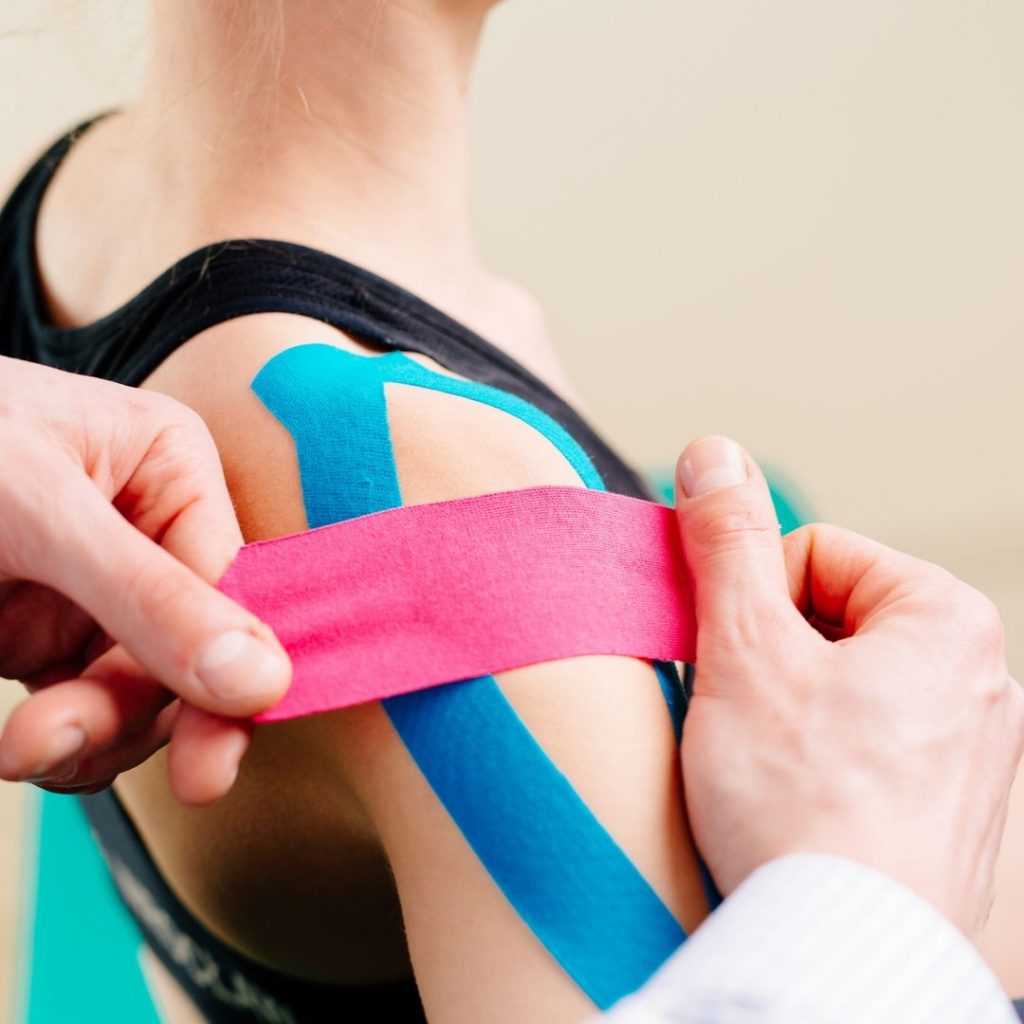Have You Ever Been To See Your Physio And Left With Some Additions Stuck On Your Skin?
Taping is a very popular technique used by physios in the treatment and prevention of musculoskeletal injuries. There are various types of tape, ranging from rigid to more flexible kinesiology (you may hear this referred to as K-tape) or active tapes. Here is the low-down on some different types you might come across during your time with your physiotherapist.
Rigid Strapping Tape

This is one of the most common and more conventional forms of tape used by physios globally. As the name suggests, it is rigid (i.e. it does not stretch). It is usually light brown or beige and is designed to hold firm, making it ideal for providing support or stability to a joint.
Let’s give you an example… A footy player has rolled their ankle and is returning to training after an intensive rehab period. Their physio may decide to apply rigid tape around their ankle for a few reasons; it will provide a barrier stopping the ankle from rolling again, but will also give the player confidence and an ability to play without fear of re-injury. It won’t be the aim of their physio to keep applying it every time they play, but it may be beneficial in the short term while the player is still working on match fitness.
Other common areas of the body where it’s used include:
- Across the front of the knee to aid with kneecap alignment during movement.
- Under the arch of the foot for people with flat feet that require extra support.
- In the management of pretty much any ligament injury in the knees, shoulders, fingers, ankles and feet.
Kinesiology Or K-tape
This tape has been developed in more recent years and is pretty much the opposite to rigid tape. This is very stretchy making it pretty useless at providing stability to a joint, but it does have some very cool functions. It comes in a range of colours for no other reason than to allow a player or patient choice over which colour they prefer. Choosing a pink one over a blue one doesn’t mean you’ll get anything extra from it… They are all the same (we thought we should clear that up!)
K-tape may be used for the following reasons:

- To provide moderate support to joints and muscles whilst allowing free range of motion and relieving pain.
- When applied stretched over the skin, it creates a puckering effect lifting skin away from underlying tissue – this can be very beneficial in aiding blood flow and drainage of fluid from one region to another.
- When applied to the skin over an injured joint, it can provide information to the brain about what the joint is doing and allow for increased muscle activation in the area.
It tends to stay on much longer than its rigid counterpart, so if your physio is looking for a longer-term solution between treatment sessions, they may opt for this type of tape.
Hypoallergenic Underlay
Some people are sensitive to the glue used on certain tapes, in the same way people are sensitive to band-aids or plasters. In these instances, your physio will use a hypoallergenic underlay or wrap protecting the skin from glue, meaning those people who are allergic or sensitive can still get benefit from taping. Unless they are allergic to hypoallergenic tape as well, which some people are!
These are by no means the only types of tape out there, but they are some of the most commonly used. There are some newer types of tape available now, including active or functional tape. This type of tape is similar to K-tape but will stretch more and is stronger and more elastic. It is particularly useful in offloading injured muscles and tendons and aiding with pain relief and recovery.
Next time you are in the clinic, feel free to ask us about different types of tape. We will be in our element explaining what they are used for, and if warranted, will show you firsthand how it works!
If you need to book an appointment with one of your physiotherapists please call us or book online.


